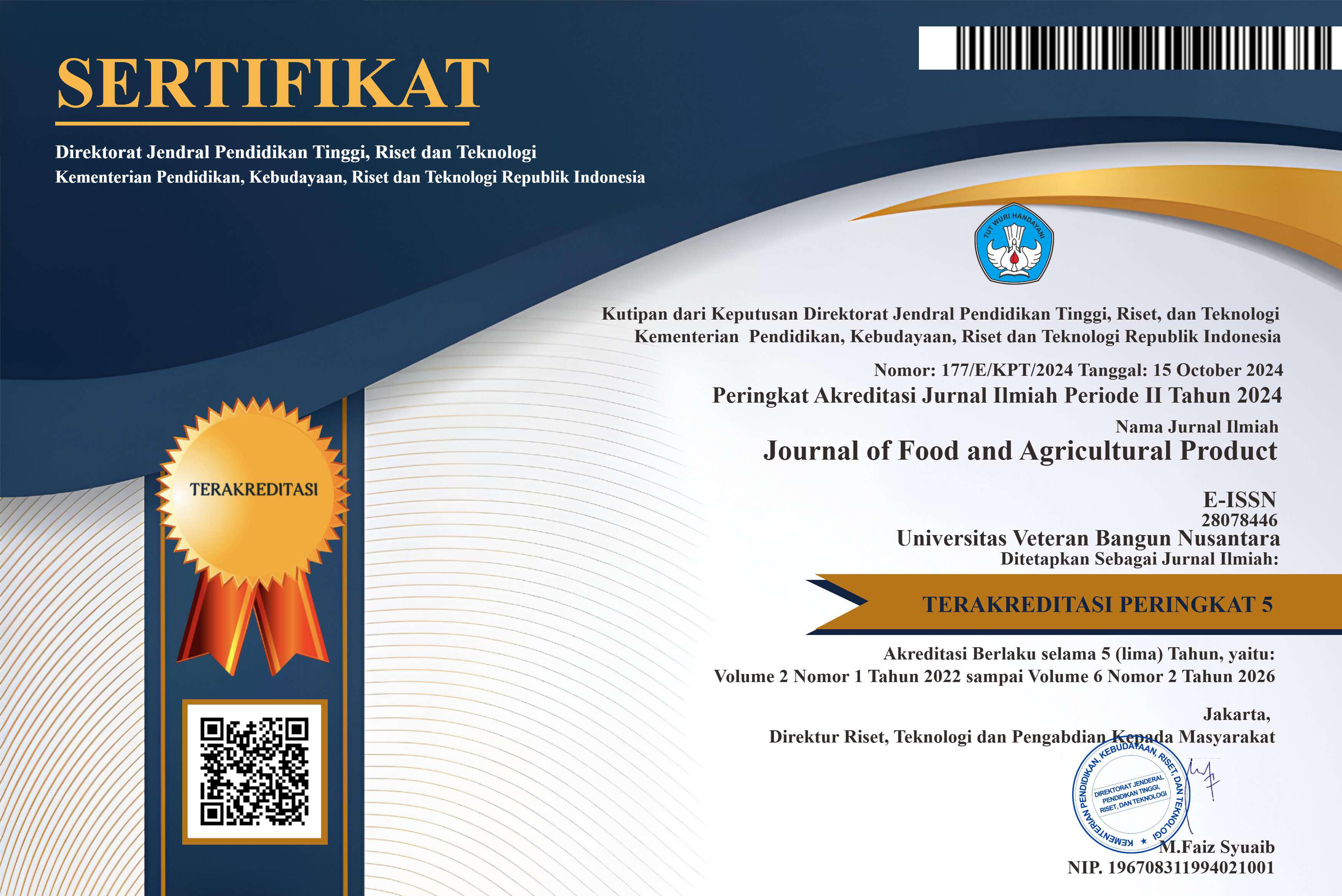Study of The Chemical Characteristics Of Leather Fruit Banana Kepok (Musa Paradisiaca L.) And Yellow Pumpkin (Cucurbita Moschata)
DOI:
https://doi.org/10.32585/jfap.v3i2.4625Abstract
Fruit leather is a product of processed fruit that is crushed and dried in the form of thin sheets with a plastic texture, has a distinctive consistency and taste. It is possible that the addition of other components can provide different characteristics of color, taste, aroma and nutritional value to fruit leather. This research aims to determine the effect of the concentration of kepok banana and yellow pumpkin on the chemical characteristics of fruit leather. The method used in this research was a Completely Randomized Design (CRD) with a comparison of banana kepok and pumpkin (F) with 5 treatments, namely F1: banana kepok 100%: pumpkin pumpkin 0%; F2: kepok banana 75%: yellow pumpkin 25%; F3: kepok banana 50%: yellow pumpkin 50%; F4: kepok banana 25%: yellow pumpkin 75%; F5: kepok banana 0%: pumpkin 100%, each treatment was repeated 3 times to obtain 15 treatment units. Research parameters include water content (thermogravimetric method), ash content (drying method) and vitamin C content (iodometric titration). The research data were analyzed using the program (SPSS) version 25.0 using the One Way Analysis of Variance (ANOVA) method. If there is a real difference in the treatment, a further test is carried out using the Duncan's Multiple Range Test (DMRT) method at a significance level of 5%. The results of the research showed that the comparative treatment of kepok banana and yellow pumpkin had a significant effect on water content with the average obtained between 10.39%-11.29% still meets the maximum limit of SNI No. 1718 of 1996, namely below 25%, and the ash content is between 1.39%-1.58%, and has no real effect on vitamin C with an average of 1.48%. -1.69%.
Keywords: Fruit leather, Chemical Characteristics, Yellow Pumpkin, Kepok Banana
Downloads
Downloads
Published
How to Cite
Issue
Section
License

This work is licensed under a Creative Commons Attribution-NonCommercial-NoDerivatives 4.0 International License.




